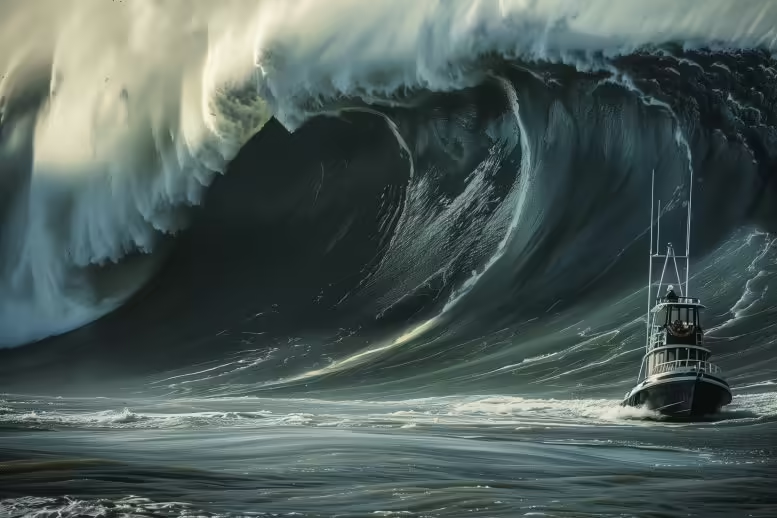An expedition from the University of Melbourne into the waters surrounding the southernmost point of Antarctica has revealed that wind is a major factor in creating huge, dangerous waves. The study found that these unpredictable waves occur more frequently than previously thought, providing important data to improve future models to predict rogue waves.
A rogue wave is a single wave that is much higher than nearby waves that can damage ships or coastal infrastructure. Ocean waves are one of the most powerful natural forces on Earth, and as global trends show ocean winds becoming stronger due to climate change, ocean waves could become even stronger.
In a recently published study Physical Review LettersA research team led by Professor Alessandro Toffoli has discovered that irregular waves are caused by strong winds and unpredictable wave shapes, confirming an idea previously only demonstrated in laboratory experiments.
Technological advances in wave research
Professor Toffoli said: “Rogue waves are spikes that appear seemingly out of nowhere, twice as high as neighbouring waves.”
Using cutting-edge technology and an expedition into one of the most volatile oceans on Earth, a research team has pioneered a new technique for three-dimensional imaging of ocean waves. Using stereo cameras on the South African icebreaker SA Agulhas II during a 2017 Antarctic expedition, they captured a rare image of wave behavior in this remote region.
Their method, which mimics human vision through sequential imaging, allowed the team to reconstruct the ocean’s undulating surface in three dimensions, providing unprecedented clarity on ocean wave dynamics. The first scientific measurement of a rogue wave was the 25.6-metre Draupner wave recorded in the North Sea in 1995. Sixteen suspected rogue wave cases have been reported in the 21st century.
“Antarctica’s rough seas and strong winds can cause large waves to ‘self-reinforce’, leading to the false wave frequency that scientists have theorised about for years but have yet to test in the ocean,” Professor Toffoli said.
Based on numerical and laboratory studies suggesting the role of wind in the formation of waves, the research team’s observations confirmed these theories in a real ocean environment.
Implications for future research
“Our observations now show that the unique sea conditions with dangerous waves occur when the waves are in their ‘young’ phase, i.e. when they are most sensitive to wind. This suggests that wind parameters are the missing link,” said Professor Toffoli. “The wind creates a chaotic situation where waves of different sizes and directions coexist. The wind makes the young waves grow higher, longer and faster. During this self-reinforcing process, the wave grows disproportionately at the expense of its neighbours.”
“We show that young waves show signs of self-reinforcing and are more likely to become rogue due to wind,” Professor Toffoli said. “We recorded waves that were twice as high as their neighbours every six hours. This reflects laboratory models: sea conditions that are theoretically more prone to self-reinforcing should create more dangerous waves. In contrast, we did not detect rogue waves in mature, windless seas.”
Professor Toffoli emphasised the critical importance of integrating wind dynamics into forecast models for the prediction of rogue waves.
“This suggests that scientists should carefully consider wind when developing tools to predict rogue waves.”
Source: Port Altele
